Billed as part of last month’s Imagine! Festival, the Spectrum Centre hosted a European Arts Education Platform session, ‘Art in Trouble’, on how the people of the Shankill neighbourhood of Belfast have told their stories more recently, through a variety of participatory art. David Boyd (Beat Carnival) welcomed the approximately ten visiting delegations from Europe, and put the event in the context by asking how any artistic intervention affects social life and social change.
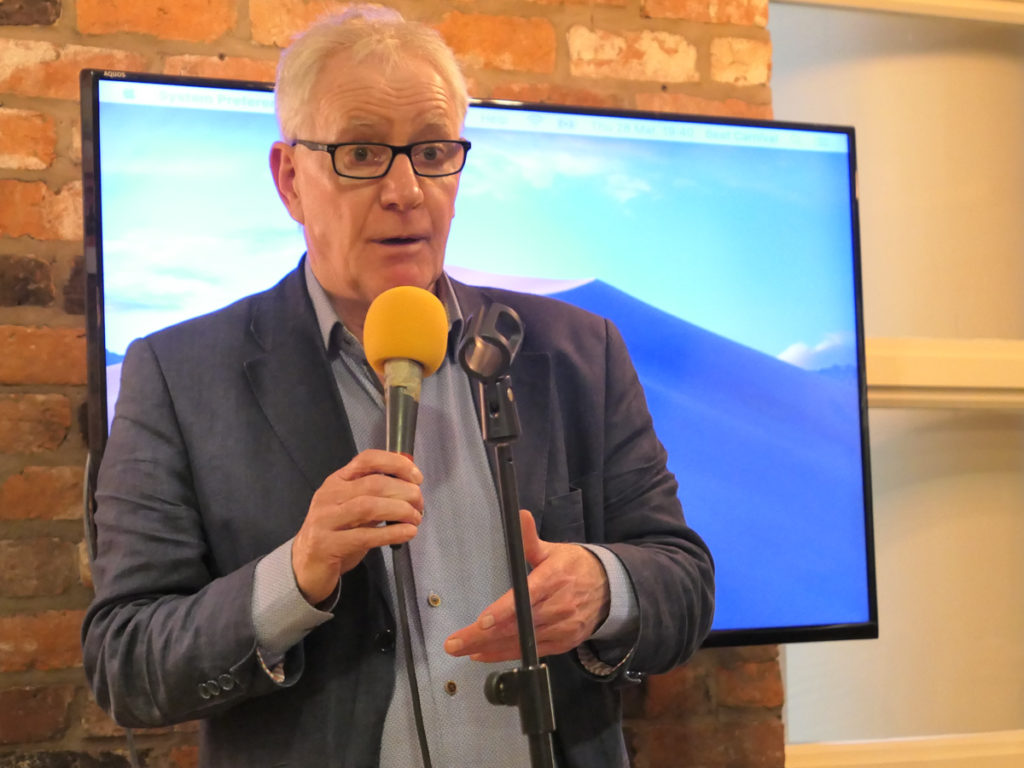
Jackie REDPATH. (c) Allan LEONARD @MrUlster
Described as a Shankill activist, Jackie Redpath gave a resume of local history, from the 18 linen mills in the 1850s, the 7,500 employed by machine manufacturer Mackies, and the importance of Belfast shipbuilding. Yet there was still much abject poverty and poor living conditions, he remarked. Redpath said that there was not a family that didn’t have a man or son in the First World War, which underlined the trauma caused by the human losses at the Battle of the Somme. But he made a comparison to the “great silence” after the Irish famine of the 19th century: “It was like that here after WWI.”
Redpath described some cross-community cooperation, or at least mutual tolerance, during the 1932 Outdoor Relief Strike and improving standards of living up through the 1950s. But he explained that this came apart in the 1960s, due to: the collapse of traditional industries; the tearing down of slums (removing whole streets; the local population decreased by 50,000 over 20 years); and the onset of the Troubles (with 65% of violent incidents occurring in north and west Belfast). Redpath cited this year’s 25th anniversary of the Shankill Bomb: “our 9/11 on the Shankill.”
“Where does creativity sit with the pain of the community?” Redpath asked.
For him, some of the greatest creativity comes from pain and grief. He cited examples of poetry in death notices. Redpath also found space for celebrating the local community in churches and religious halls, in sports (such as boxing and football), and “Orange culture,” including the sewing work of women. Redpath argued that these took up most of celebratory space and asked where is the space for other forms of creative expression.
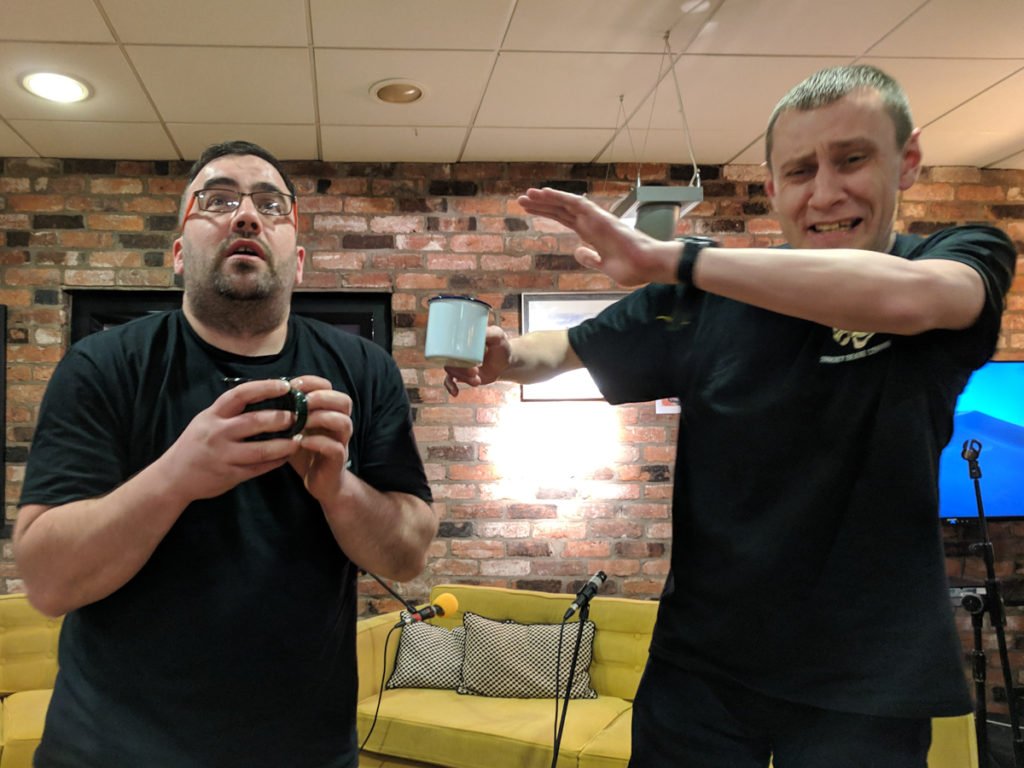
Heel & Ankle Community Theatre Company. (c) Allan LEONARD @MrUlster
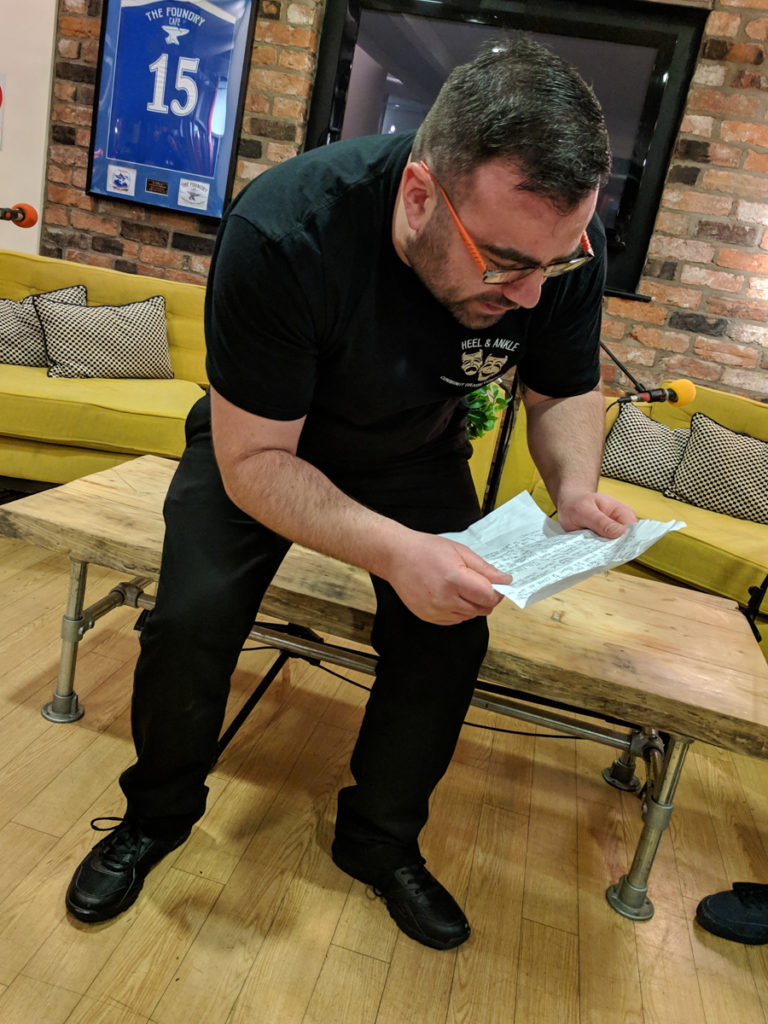
Heel & Ankle Community Theatre Company. (c) Allan LEONARD @MrUlster
Before the next speaker, the audience was treated to a theatrical skit by the Heel & Ankle Community Theatre Company. These were based on “letters from the front” from the First World War. One skit was a dialogue between two male soldiers, while another was a discussion between a mother and her two sons still at home. This was participatory art in action.
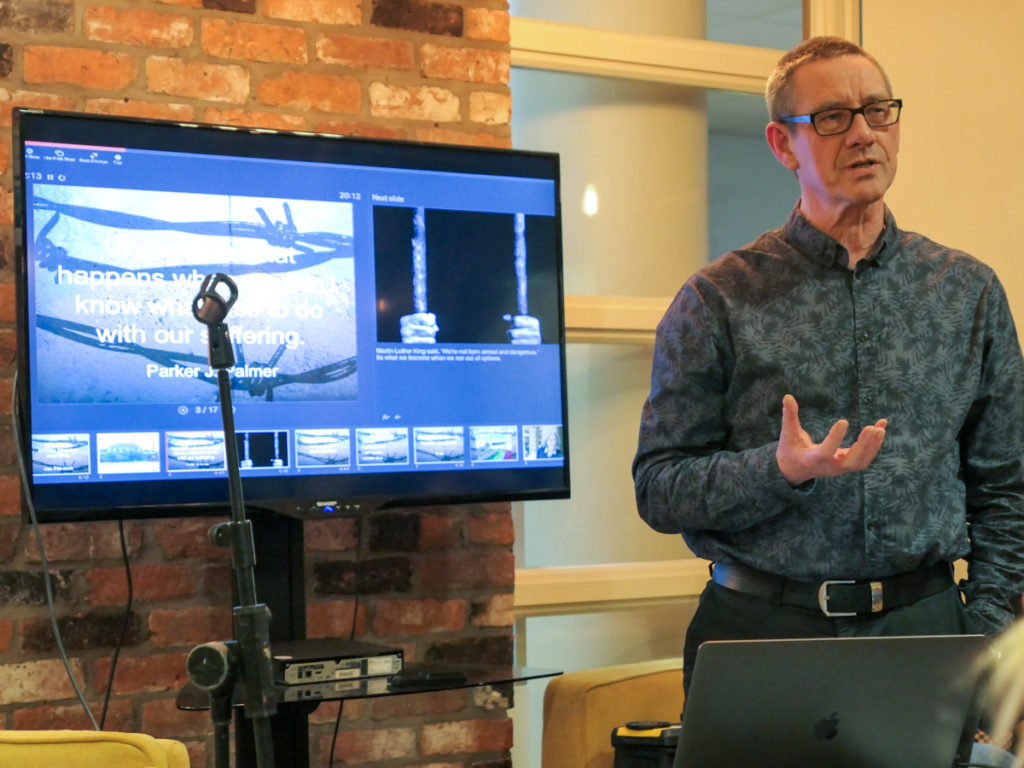
Tom MAGILL (ESC Films). (c) Allan LEONARD @MrUlster
Filmmaker Tom Magill gave a presentation on transformation theatre work, describing his inspiration from the work of Augusto Boal and his Theatre of the Oppressed. Magill is known for his 2007 play, Mickey B, which featured 42 prisoners (half of whom were serving life sentences). Based on Shakespeare’s MacBeth, the project took two years to complete. It has been translated into seven languages.
“Creativity is a great way of expressing and using wounds to tell a story,” Magill described its cathartic power.
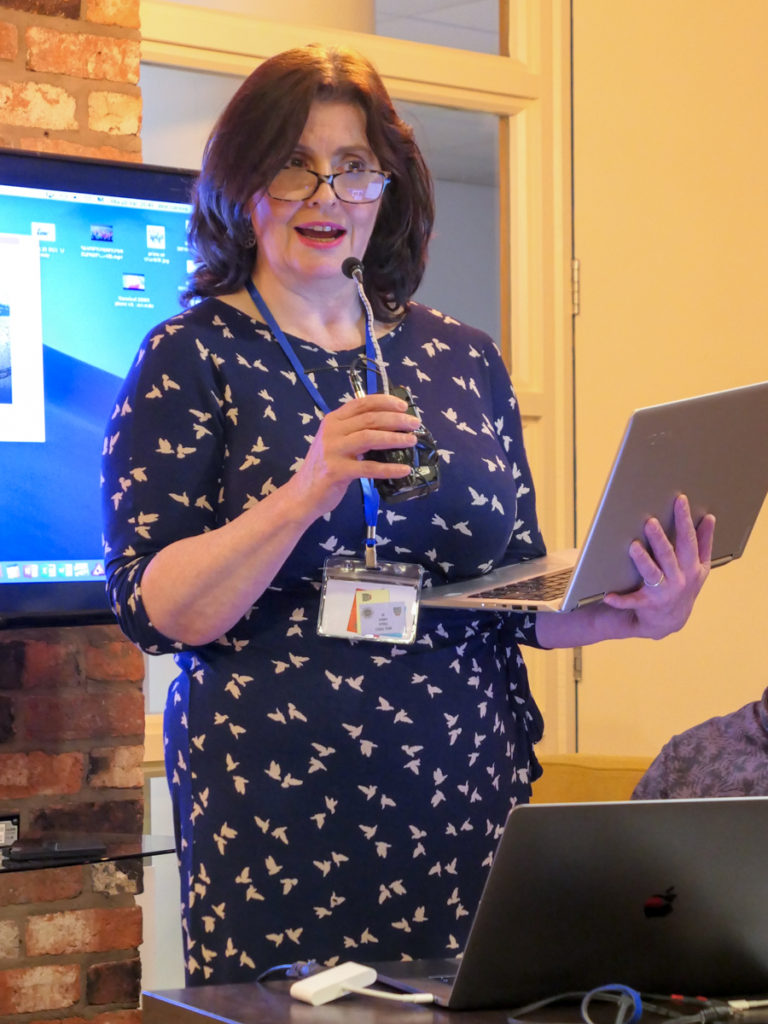
Jo EGAN. (c) Allan LEONARD @MrUlster
Jo Egan, a playwright and theatre maker, made the observation that there were many men active in community arts in Northern Ireland, in contrast to what she saw in Dublin (where she is from), where participants are mostly women. She also cited the work of Augusto Boal.
Egan highlighted The Wedding Community Play, which was part of the 1999 Belfast Festival. While much community theatre takes place within a single community environment, The Wedding went beyond, by telling the story of a Catholic-Protestant marriage. Participants travelled to homes of the bride and groom, before travelling an enacted ceremony at First Presbyterian Church on Rosemary Street, Belfast, followed by a reception in a pub. There was a core cast of 35 actors alongside a community choir of 50. It took a core staff of five persons 18 months to create the play. Egan remarked that some participants at the start said that they were embarrassed to be from Shankill, but after the play they felt proud.
Egan shared some lessons with us. She suggested that the practice of community theatre can help participants change the narrative about themselves. In regards to dealing with those who have experienced trauma, she explained that she keeps herself “purposefully ignorant” and asks the participant whether they want to put that on stage: “This is art not counselling.” Finally, the artistic outcome is discovered as part of the creative process; it is unknown at the start.
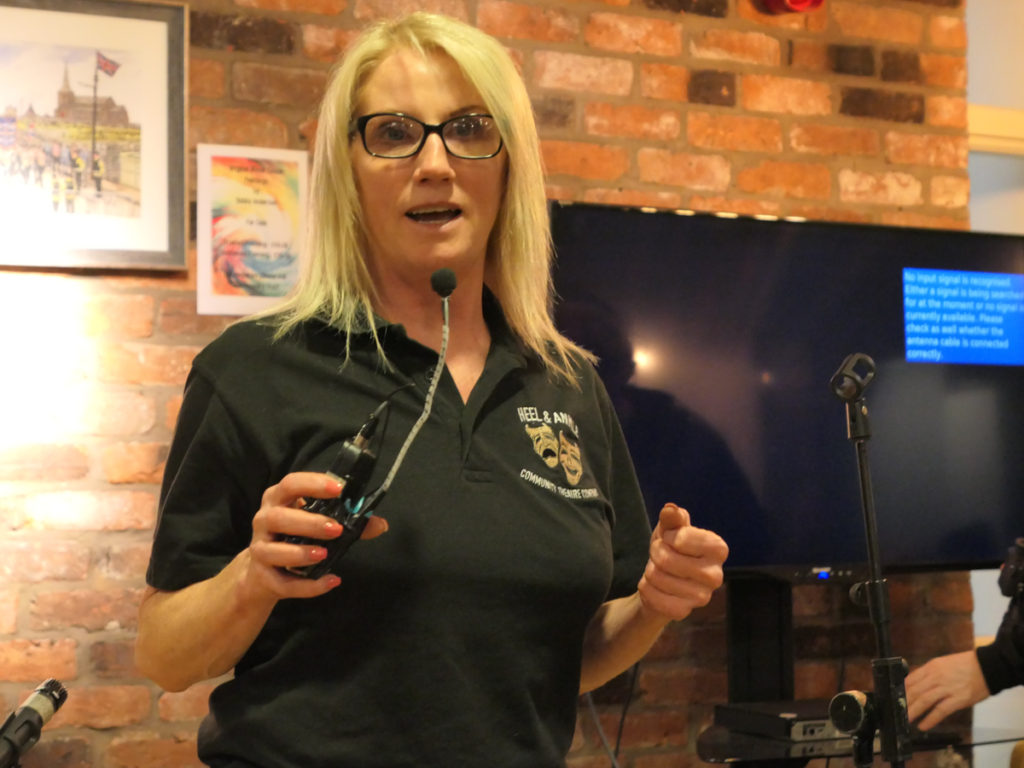
Kim JACKSON. (c) Allan LEONARD @MrUlster
Kim Jackson from Heel & Ankle mooted the question, “What is community theatre?” For her, it is those around you writing the stories. Through that comes community and family. “Tell us your most vulnerable moment and let’s put that on stage (but we do have signposting where needed),” she explained. Jackson reviewed her company’s work of the past five years, with ambitions to explore more topics, especially with a younger generation, and go into schools and out-of-school environments.
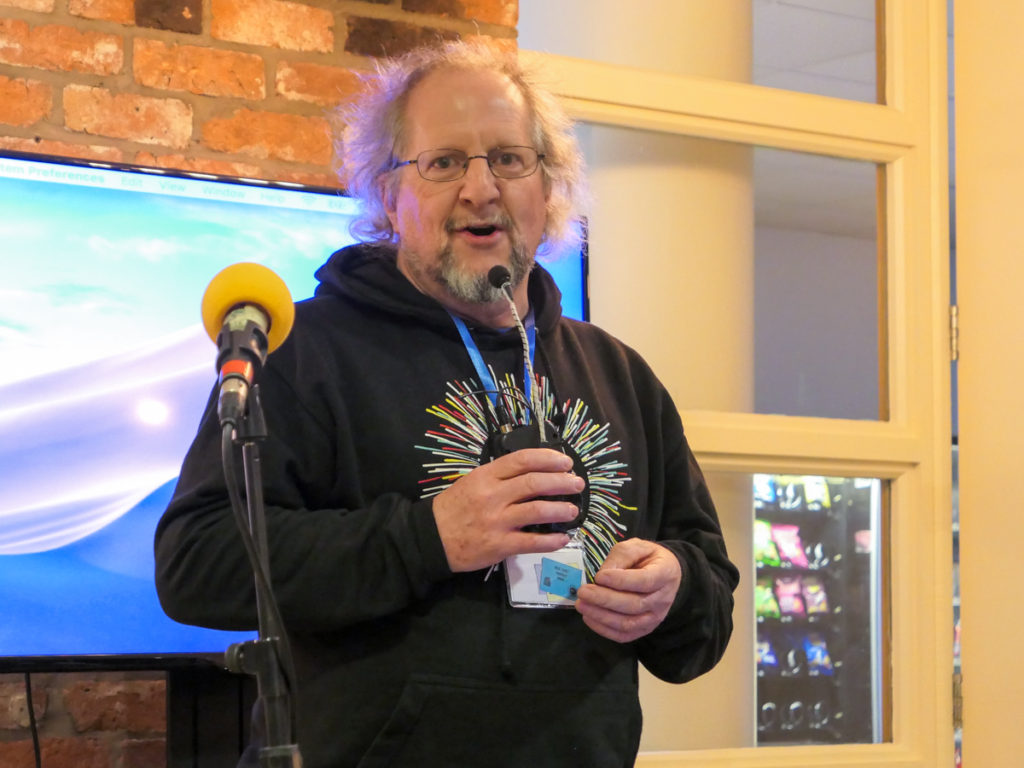
David BOYD (Beat Carnival). (c) Allan LEONARD @MrUlster
David Boyd described his work at the Beat Carnival arts company. He played a video of its project, ‘Light up the Road‘, which shows people coming out onto the streets and celebrating themselves. “But we’re not so good at celebrating what we want to see in the future,” he added, perhaps as a challenge. Redpath replied that he wants this winter festival to be the place to go for those beyond Shankill, within ten years’ time. To assist in their future visioning goals, he reminded all attending that the Spectrum Centre hosts conversations every Thursday evening.
Finally, Boyd pointed out Aisling O’Beirn (Ulster University) in the audience. Along with Martin Krenn and Laura McAtackney (Aarhus University), they developed a dialogical art project, “Transforming Long Kesh/Maze”, as part of TRACES Creative Co-Production. Some artefacts were on display behind glass cases in the back of the room, while a full set of descriptive postcards were available in glass cabinets. There is also an explanatory article in an issue of TRACES Journal and a conference presentation.
In summary, it is apparent that the community of Shankill have expanded their cultural expression beyond performance acts of traditional singing, parading, and craft work. Participants have learned how to transform their historical experiences into new expressions of resilience and possibility. May the conversations and imagination continue.
Photos

Prison art from the Troubles. Seminar/Exhibition: Art in Trouble https://imaginebelfast.com/events/art-in-trouble/ Spectrum Centre, Belfast, Northern Ireland. @TEHnetwork @ImagineBelfast (c) Allan LEONARD @MrUlster
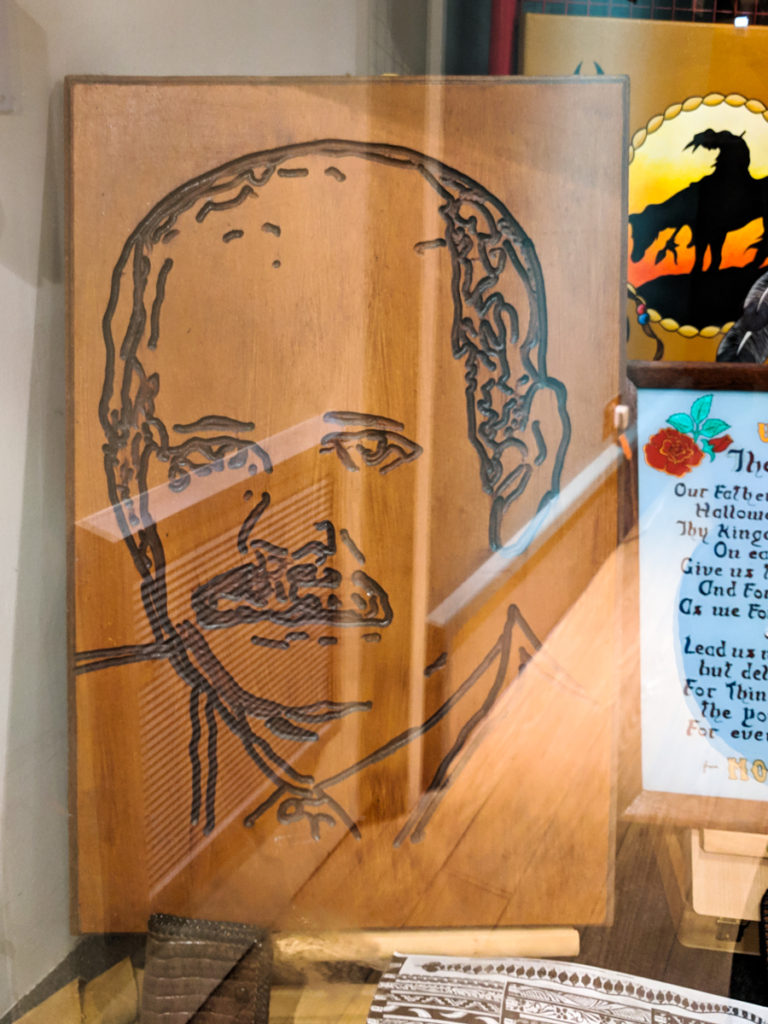
Prison art from the Troubles. (c) Allan LEONARD @MrUlster
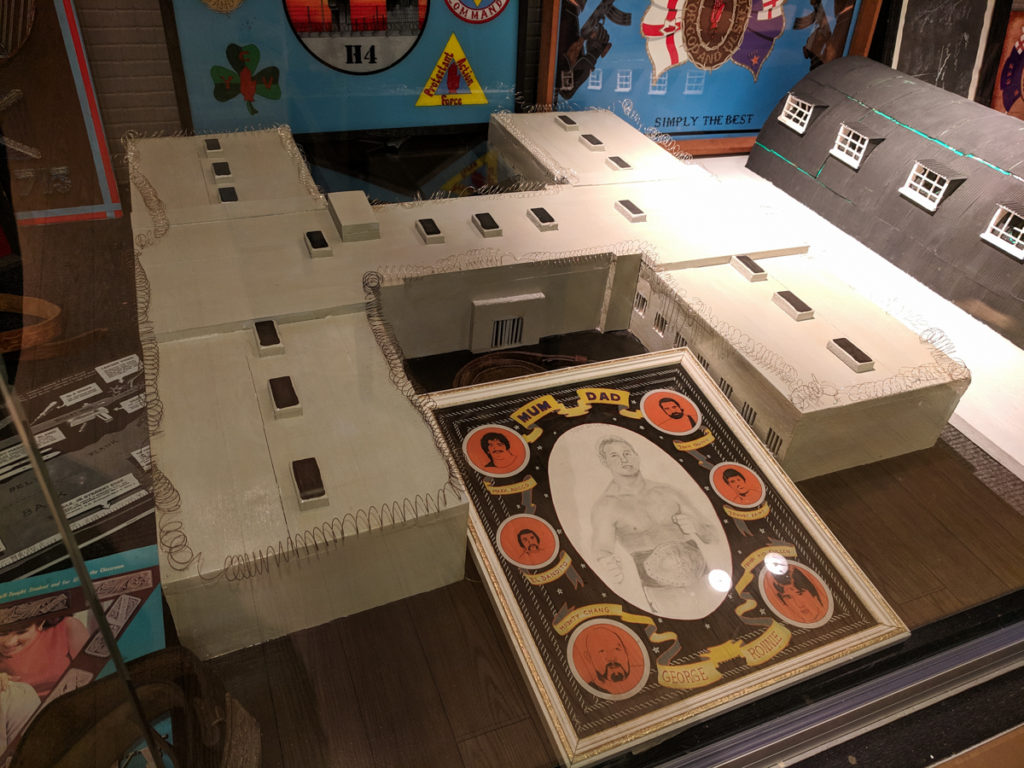
Prison art from the Troubles. (c) Allan LEONARD @MrUlster
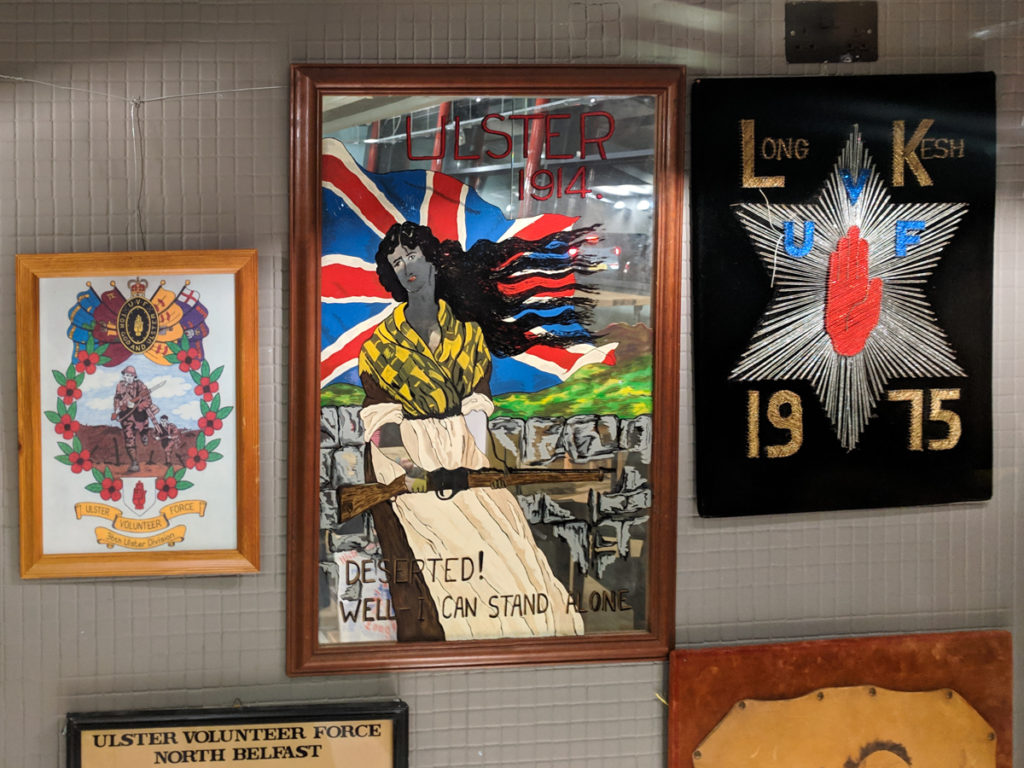
Prison art from the Troubles. (c) Allan LEONARD @MrUlster
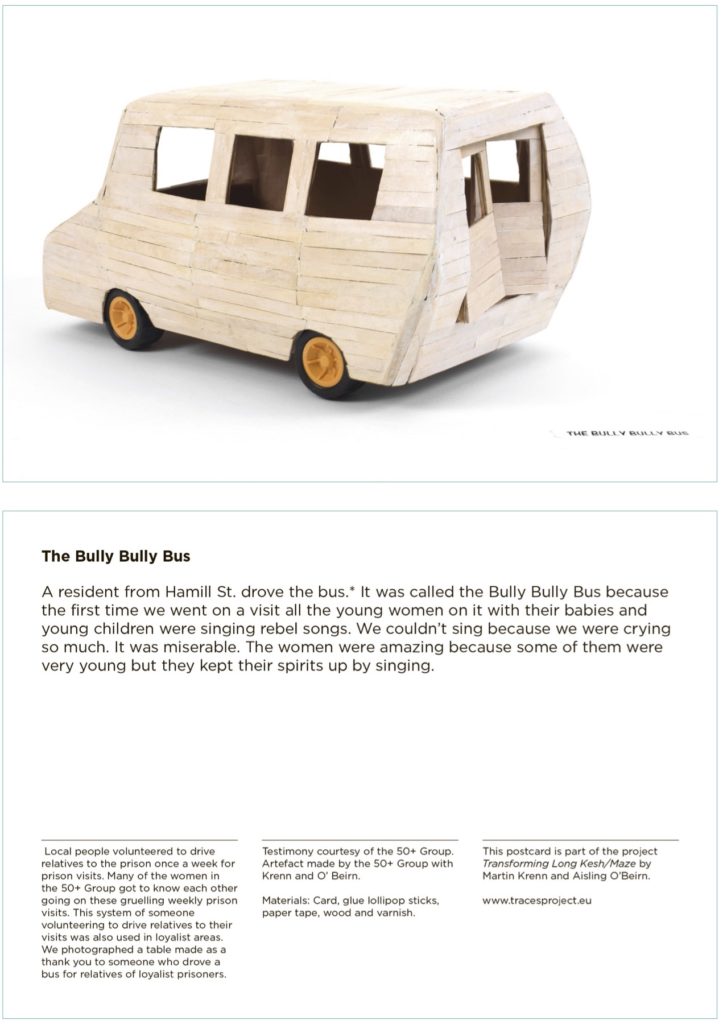
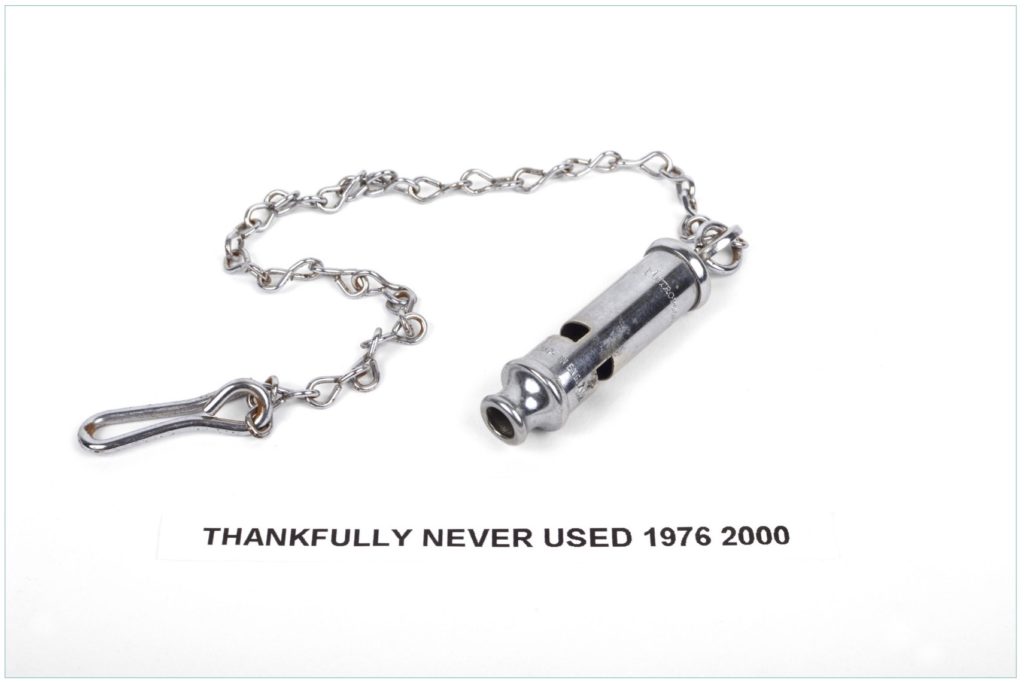

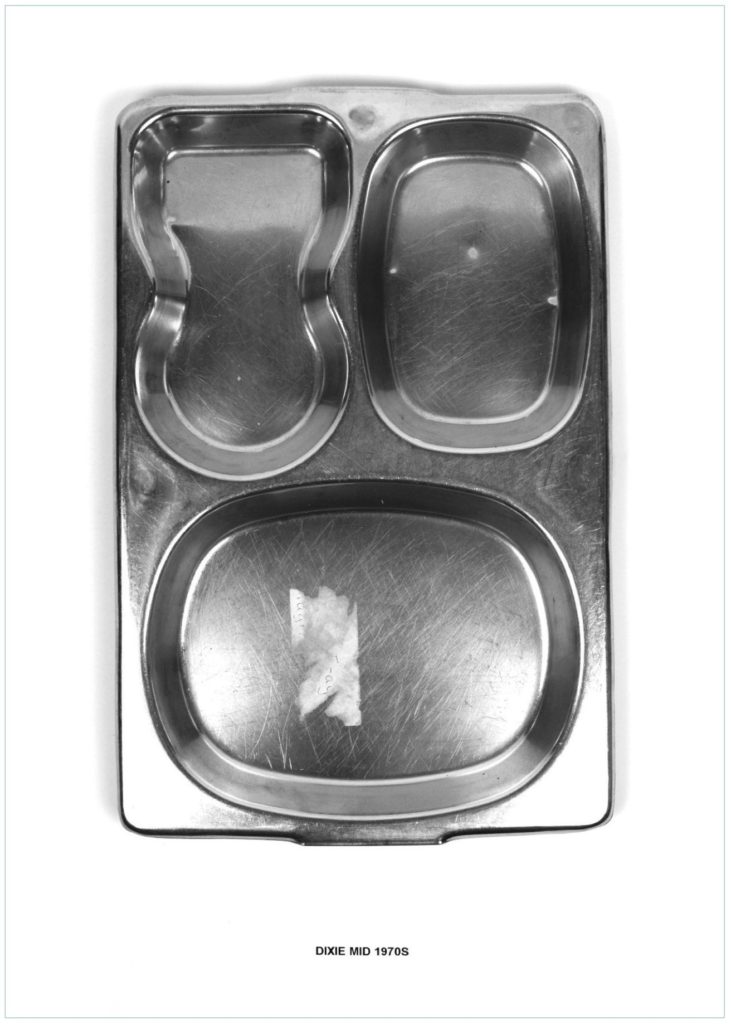
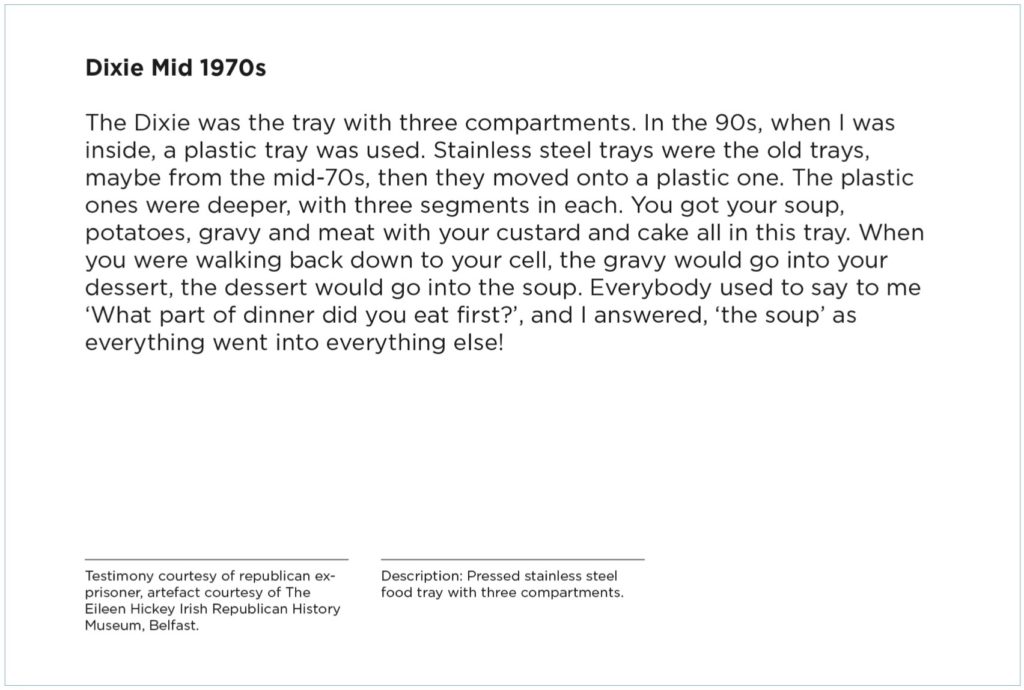
Originally published at Mr Ulster.
